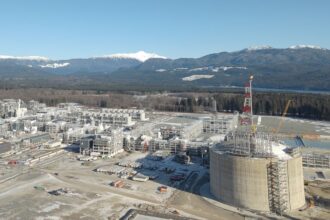In the heart of Saskatchewan’s industrial corridor, Regina’s once-thriving manufacturing sector finds itself at a critical crossroads as mounting tariff pressures threaten to derail decades of steady growth. A comprehensive report released yesterday by the Regina Economic Development Authority reveals that local manufacturers have absorbed over $47 million in additional costs due to recent trade policies—a staggering figure that has sent ripples through the prairie economy.
“We’re essentially fighting with one arm tied behind our back,” explains Martin Doherty, CEO of Prairie Steel Industries, whose company has seen profit margins shrink by 18% over the past fiscal year. “These tariffs weren’t just a temporary setback—they’ve fundamentally altered our competitive position in both domestic and international markets.”
The 86-page report, which analyzed data from 37 manufacturing operations across the Regina region, indicates that the steel and agricultural equipment sectors have borne the brunt of these trade measures. Companies that once exported 60% of their production to American markets have been forced to slash forecasts and, in several cases, reduce their workforce to maintain operational viability.
What makes Regina’s situation particularly concerning is its role as a manufacturing hub within Canada’s economic landscape. The city’s specialized manufacturing corridor, developed over four decades, represents nearly 17% of Saskatchewan’s industrial output—a significant economic engine now sputtering under external pressures.
Provincial Economic Development Minister Donna Harpauer has signaled that relief measures are being considered, though details remain sparse. “We recognize the critical importance of manufacturing to Regina’s economic foundation,” Harpauer stated at yesterday’s press conference. “Our government is actively working with federal counterparts to seek pathways that preserve both trade relationships and local economic interests.”
Industry analysts point to a particularly troubling trend within the data: smaller manufacturers, those employing fewer than 75 workers, are disproportionately affected by the tariff structure. These operations typically lack the capital reserves to weather prolonged trade disputes and have fewer options for restructuring their supply chains.
“The current situation has created a two-tiered manufacturing economy in Regina,” notes Dr. Eleanor Westbrook, economics professor at the University of Regina. “Larger operations with diversified product lines can pivot more effectively, while specialized smaller manufacturers face existential challenges that could permanently alter the city’s industrial profile.”
The report arrives as the Canadian business community grapples with broader questions about economic resilience in an increasingly volatile global trade environment. Regina’s experience offers a microcosm of challenges faced by manufacturing hubs nationwide, where established industrial centers must navigate unpredictable policy shifts that can materialize with little warning.
Particularly concerning for local officials is the timing of these pressures, which coincide with planned expansions by several major employers. Harvest Equipment Technologies, which had announced a $23 million facility expansion expected to create 86 new positions, has now placed those plans under review.
“We’re not canceling our commitment to Regina,” clarifies Harvest CEO Sarah Matheson. “But we need to carefully reassess the timeline and scope given the current tariff landscape. What made economic sense eighteen months ago requires thorough reevaluation today.”
Municipal leaders have responded by fast-tracking permits for manufacturers seeking to adapt their operations and by creating a dedicated task force to identify potential supply chain innovations that might offset tariff impacts. These measures, while welcomed by industry representatives, are widely viewed as insufficient without corresponding adjustments to the broader trade framework.
As world trade policies continue to evolve at an accelerated pace, Regina’s manufacturing sector stands as a compelling case study in economic adaptation. The resilience demonstrated by local companies offers lessons for industrial communities throughout North America, even as uncertainty clouds their immediate prospects.
What remains to be seen is whether this represents a temporary disruption or a fundamental restructuring of Regina’s economic identity. As manufacturers adjust their strategies and government officials scramble for solutions, one question looms large: can specialized manufacturing centers like Regina navigate the new reality of fluid trade policies without surrendering the industrial heritage that has defined them for generations?


















